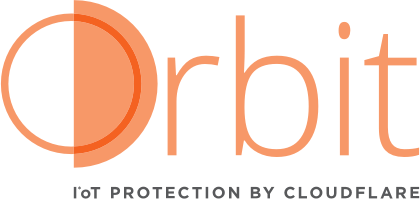Introducing Cloudflare Orbit: A Private Network for IoT Devices

In October, we wrote about a 1.75M rps DDoS attack we mitigated on our network, launched by 52,467 unique IP’s, mostly hacked CCTV cameras.
We continued to see more IoT devices in DDoS attacks, and so we started to put together a security solution to protect the devices from becoming part of the botnet in the first place. Today we’re announcing it: Cloudflare Orbit.
PC-era security doesn’t work in IoT-era computing
As we talked to IoT companies, over and over again we heard the same thing. In the consumer electronics space, IoT manufacturers were telling us that they were shipping patches to their devices, but their end users didn’t always download and install them. (Reserve your judgment, how many times have you pressed ignore when your phone asked you to update its operating system?) In the industrial control, medical and automotive spaces, where devices are used in life-critical functions, we heard a different story. Even if someone wanted to apply a patch, it just wasn’t that easy. For example, even if the manager of a nuclear power plant wants to update software on their thermostats, shutting down operations long enough to do that means the update has to Continue reading
Visa Inc. Gains Speed and Operational Efficiency with Docker Enterprise Edition
DockerCon 2017 was an opportunity to hear from customers across multiple industries and segments on how they are leveraging Docker technology to accelerate their business. In the keynote on Day 2 and also a breakout session that afternoon, Visa shared how Docker Enterprise Edition is empowering them on their mission is to make global economies safer by digitizing currency and making electronic payments available to everyone, everywhere.

Visa is the world’s largest retail electronic payment network that handles 130 billion transactions a year, processing $5.8 trillion annually. Swamy Kocherlakota, Global Head of Infrastructure and Operations, shared that Visa got here by expanding their global footprint which has put pressure on his organization which has remained mostly flat in headcount during that time. Since going into production with their Docker Containers-as-a-Service architecture 6 months ago, Mr. Kocherlakota has seen a 10x increase in scalability, ensuring that his organization will be able to support their overall mission and growth objectives well into the future.
Global Growth Fuels Need for A New Operating Model
In aligning his organization to the company mission, Swamy decided to focus on two primary metrics: Speed and Efficiency.
- Speed is tied to developer on boarding Continue reading